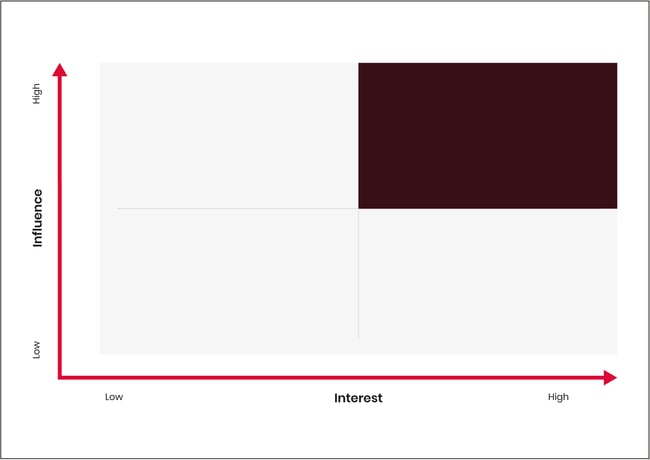This blog post is the first article of a 4-part series entitled "Beyond Stakeholder Mapping", which aims to explore the engagement dynamics and specificities each quadrant requires in the stakeholder mapping journey.
You can access the other articles here: Part 2 | Part 3 | Part 4 or download the guide with all articles here:
Strategic stakeholders: the high-influence/high-interest quadrant
Most people have used some form of stakeholder mapping when preparing public engagement or consultation exercises. There are excellent reasons for doing it, and approaches ranging from simple and crude to comprehensive and sophisticated.
There are also many questions to consider when you undertake the stakeholder mapping process.
- Whose perceptions and assessments are you capturing, and how much reliance can be placed on them?
- Are you mapping stakeholders according to generic types or specific known individuals or organisations?
- And are you interested in their perceived influence and interest in respect of one specific problem or proposal … or a bundle of issues?
Regardless of how you may have got there, let’s assume you have identified stakeholders as having both a High interest in the subject and a High degree of influence - those located at the top-right quadrant of your stakeholder mapping matrix:

They are often more numerous than the others you have mapped – very likely because you know them better than the others. By definition, you will regard them as being influential – otherwise, you might not be as aware of them.
Over the years, we have found that organisations tend to overestimate the interest that stakeholders have, but they are less likely to have an exaggerated view of their influence.
It is conventional wisdom that these are the stakeholders that need close management, but in truth, they would be the ones who would absolutely hate any idea that they were being 'managed'.
What matters with this category is that you have a relationship with them – and that you understand its dynamics.
If this is a planning scenario and your Planning authority regards Tesco as a high/high stakeholder, one has to be realistic as to the true power imbalance between the organisations and the ability of large companies to throw a lot of resources at an issue if it wants to secure a result.
In other circumstances, the relationship might reflect a long history, coloured by the ups and downs of agreement and disagreement.
History is especially important with the high/high category, especially if you find organisations or people that have always carried weight in your community but maybe only recently found an issue they care about.
Expect a degree of intensity about the dialogue that might ensue. If you need to know the views of an important key stakeholder, it is probably not a good idea just to send them the standard questionnaire that’s sent to others.
This is where we occasionally encounter the dilemma that inviting them in for a cosy conversation may look like unjustified favouritism and provoke status envy among others. Yet it may well be a good approach!
But there are even better ways of overt involvement. I have always recommended talking to key stakeholders before instigating a consultation. These days, we can invite them into the co-production room or involve them in Stakeholder Reference Groups or Panels.
In fact, we often don’t need to invest in contacting the high/high. They are there, visible and anxious to influence before you’ve even started. Treat them with the respect they expect – provided you don’t make yourself less accessible or visible to others.
These are the people with whom you will probably engage most – and the success of your projects may well depend upon that relationship, and how it operates in practice.
In the next article, we will explore the High-Influence/Low-Interest category.
Download the Beyond Stakeholder Mapping Guide:
Written by Rhion Jones
Rhion Jones was the Founder Director of the Consultation Institute and is an acknowledged authority on all aspects of public and stakeholder engagement and consultation. He advises Tractivity and will be contributing expert analysis and commentaries on current issues.
Rhion now publishes thought leadership articles regularly as the ConsultationGuru.


